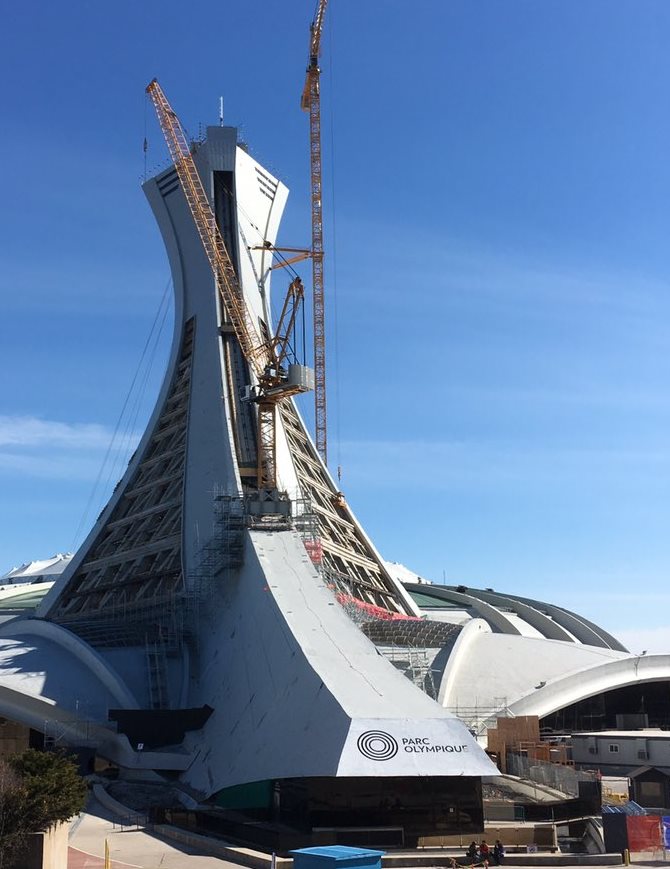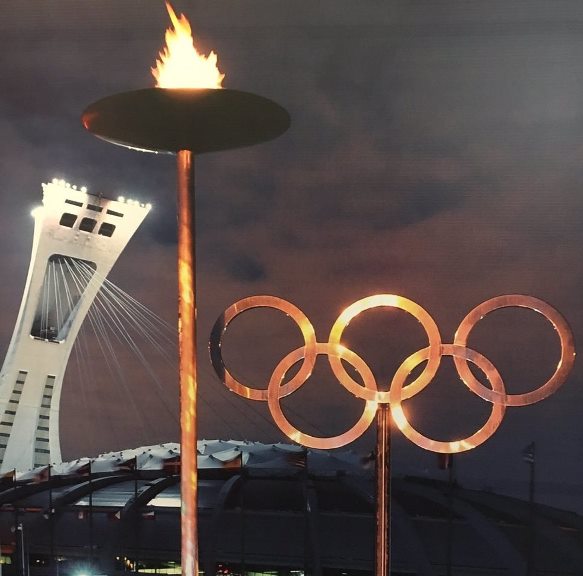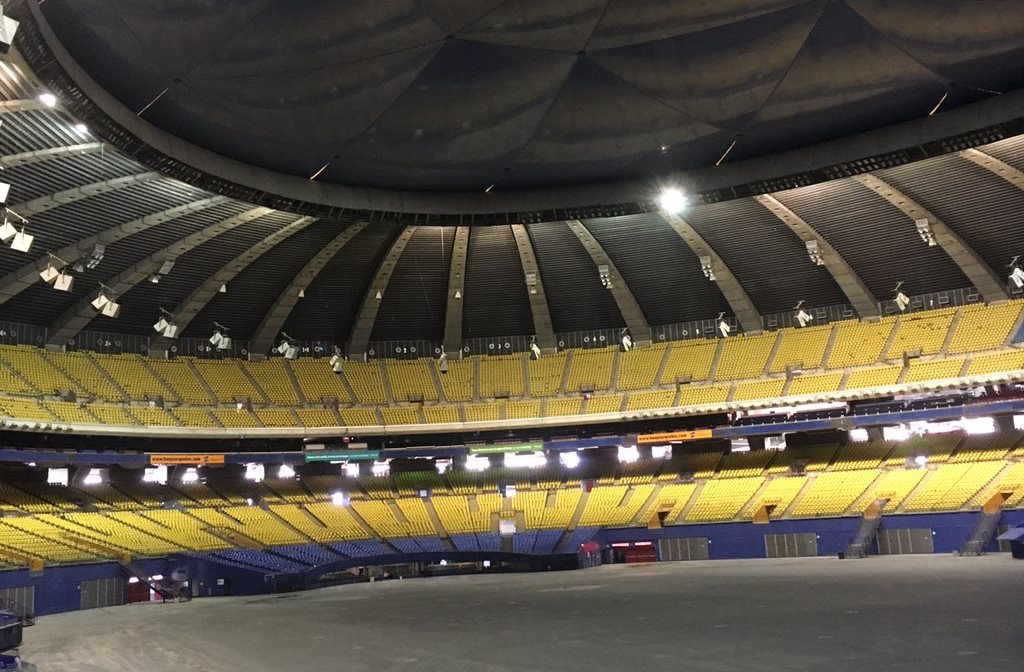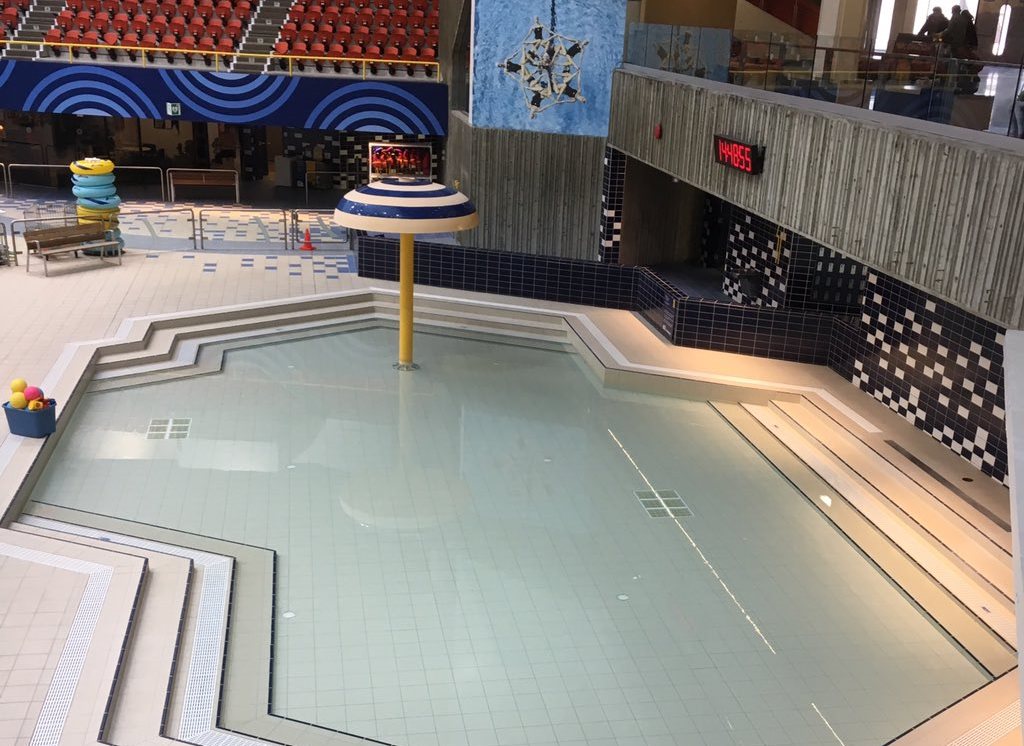The Big Owe
7By Harbour Heather
For a sports and history nerd, nothing’s better than stadium tours when traveling. Learning about famed stands, sitting where legends of the game once resided, and insightful and obscure sporting trivia resonates, and adds a depth of appreciation to a team and a city.
The Montreal Olympics of 1976 have a reputation which has lasted, even through the subsequent, near-compulsory Games dramas. Visiting the Olympic Park and touring the 40 year anniversary exhibition was high on my list while in town.
Geoff, our Quebecois guide, was deeply passionate, if not slightly defensive, about the Games, their importance to the city and their ongoing legacy. But numbers don’t lie, and at a 720% cost overrun, 1976 remains the highest budget-blowout Olympics in history. The city is still divided on the issue and the effect of the financial disaster.
Perhaps it was cursed from the start. With leading architectural concepts for the time, there were issues understanding new building methods. The site’s soil was unsuitable, fragile and often crumbled. Workers walked off the site from May-October 1975, and with construction difficult in the heavy winter weather, organisers considered shifting the Games late that year.
Enter the Quebec provincial government, who took over. They scrapped the building of the now-iconic tower, ordering all contractors to focus on the stadium, with round-the-clock construction. With this, the IOC signed Montreal off in February 1976, five months before showtime.
We’re used to last-minute stories in all Olympic host cities. In Montreal, the landscaping finished one week before the Games, and the last seat and final sod of grass were put in place the day before the opening ceremony.
Fun historical fact (which was probably not so fun for those in the moment): Village accommodation was split by gender, not nationality, which produced the curious arrangement of the US athletes sharing a floor with Soviet counterparts in the midst of the Cold War.
In the end, the ’76 Olympics cost $1 billion (remember, this was the 70s). The city of Montreal was required to pay $200 million, with the rest covered through a tax on tobacco, netting $90 million in annual revenue. The debt was only finally cleared in 2006, 30 years later. The stadium, nicknamed “The Big O” for the shape of its roof, has since been known as “The Big Owe”.
These days, the city has two goals for the site – upholding the Olympic spirit, and making money.
Following the Olympics, baseball and the Canadian Football League made brief homes there, but even with the Games capacity of 74,000 lowered to 56,000, neither could sustain permanent residence. Exhibitions games or one-off showcases still occur, with the Toronto Blue Jays recently recording a sellout.
Fun fact: Pink Floyd holds the all time attendance record at 80,000 – even more than the Games.
It is now mostly used for concerts and events, like motorcross and the crane trade show. These bring in anywhere from three days to three weeks of revenue, a word used regularly throughout the tour. With up to five tours a day, at $18 a pop, the opportunities for dollars are certainly being captured.
 The tower was finally completed in 1987; its purpose to hold up a retractable roof, which malfunctions and tears frequently. It was closed for refurbishment so we couldn’t enter “the world’s tallest incline tower!” It is being converted to bank offices and public administration. (Don’t worry, come summer, you’ll still be able to get married on top of it.)
The tower was finally completed in 1987; its purpose to hold up a retractable roof, which malfunctions and tears frequently. It was closed for refurbishment so we couldn’t enter “the world’s tallest incline tower!” It is being converted to bank offices and public administration. (Don’t worry, come summer, you’ll still be able to get married on top of it.)
Like many Olympic villages, the eye-sore pyramids are now residential condos. The velodrome was converted into a science education centre cum zoo. The Montreal Impact of the MLS have made a home in the precinct, as have a planetarium and insectarium.
But what Geoff and the other pro-76ers are most proud of is Le Centre Sportif. Here, the spirit of inclusion lives on. A high performance centre for Quebec’s best sportspeople surrounds a multi-purpose pool, where regular citizens swim in the wake of professional divers, and a children’s splash pool sits where Olympians once received their medals.
Sport is a huge part of Montreal, and unlike their storied, celebrated Habs in the NHL, their Olympic legacy is tainted by controversy, debate and expensive cigarettes.




Wow, now that is a spectacularly good article, cheers!
People will recall too that we didn’t do the Montreal Games organisers any favours either, in them trying to attract sponsors or goodwill by our decision to fly in the face of international sentiment; sending the All Blacks to South Africa that same year, leading to the boycott by the African nations (and depriving the world of perhaps the Games highlight: Filbert Bayi vs John Walker in the 1500 metres).
That very action also being a major catalyst for the formation of the 1977 Gleneagles Agreement.
Thanks Paul! It was a really interesting experience, especially with our guide’s insistence everything was sunshine and rainbows. (He was really lovely, friendly etc but just very adamant nothing was ever wrong.) there was mention of the boycott in the exhibition. The Americans on the tour knew nothing of it.
Ha. If South Africa had been under communist rule in 1976 those Americans you mentioned would have been fully aware, there’s no doubt!
Re. the African boycott of ’76 Olympics: Plenty have speculated that if it had been a much bigger nation than tiny little NZ (which we absolutely were) in 1976, that boycott wouldn’t have gone ahead. Interesting.
Stellar story!! A story that probably will never be here again with Comms about to shut down.
very interesting
[…] North American sojourn, I wrote about the American game day experience, the NHL Hall of Fame, and stadium tours that give insight into stories behind famous teams or sporting […]